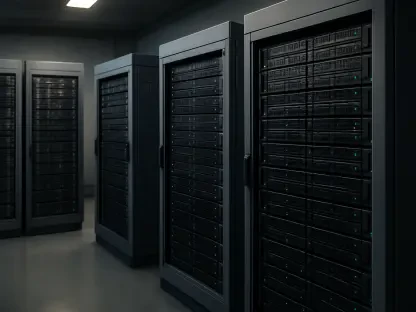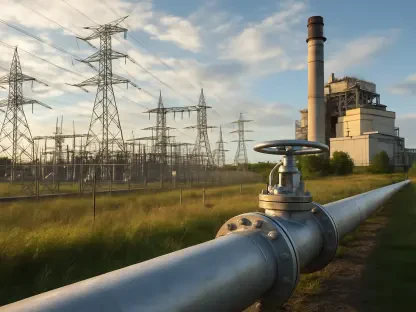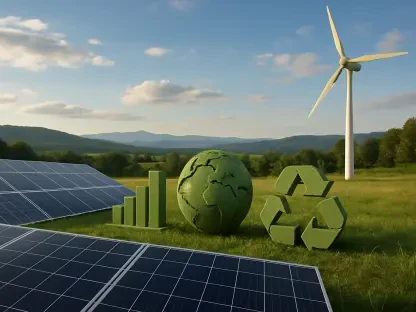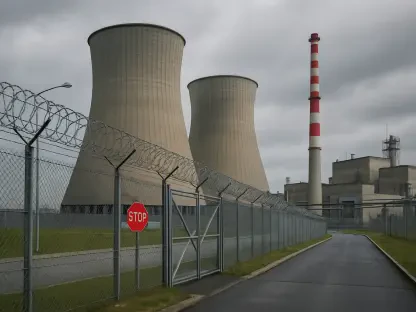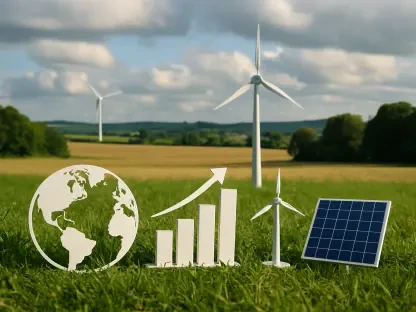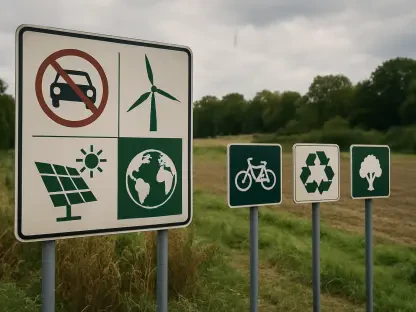A recent report from the U.S. Department of Energy (DOE) has spotlighted increasing apprehension over the reliability of the nation’s power grid, suggesting that power outages could amplify a hundredfold by the end of the decade. The prediction stems from escalating electricity demand, plant retirements, and insufficient investment in new, firm capacity generation resources. The analysis projects 104 gigawatts (GW) of plant retirements by 2030, set against the construction of 210 GW in new generation, with merely 22 GW categorized as firm and reliable. As these numbers paint a precarious picture, they have sparked extensive debates among energy specialists, policymakers, and stakeholders regarding the nation’s strategy for sustaining a reliable energy supply in the face of burgeoning consumption and shifting energy landscapes.
Strained Energy Supply and Demand Dynamics
A Growing Need for Firm Generation Capacity
The report underscores an urgent necessity for more firm generation capacity—trusted sources like coal and natural gas capable of reliably accommodating demand surges. The DOE estimates an additional 100 GW of peak capacity is crucial by 2030, with half of this figure solely demanded by data centers whose energy appetites continue to swell. As industries increasingly rely on digital infrastructure, the pressure mounts for stable power sources to meet these needs. Forecasted plant retirements threaten to deepen this gap further, creating a significant conundrum regarding how to ensure energy security without compromising ongoing commitments to cleaner energy alternatives.
Critics emphasize that despite the DOE’s analysis, substantial opportunities exist to phase out aging, polluting coal and gas plants while enhancing grid reliability through advanced technologies. Renewable resources, coupled with battery storage solutions, present viable pathways to offset reductions in traditional energy capacity. Yet, the transition requires prudent planning and enhanced storage capabilities to circumvent potential power shortfalls. As the energy paradigm shifts, stakeholders advocate cohesive strategies melding sustainable generation techniques with robust policy frameworks that foster innovation without compromising grid reliability.
Identifying Regional At-Risk Zones
The DOE adopts a comprehensive methodology to pinpoint regions vulnerable to power outages, combining hourly datasets on load, generation, and interregional transfer capabilities across 23 U.S. electric subregions. By simulating conditions using 12 distinct years of historical weather data, the approach provides nuanced insights into potential reliability hurdles. Utilizing real-world figures for wind, solar, load, and thermal availability further enriches this analysis, facilitating informed evaluations of which regions might require targeted interventions to bolster resilience against prospective disruptions.
Despite these meticulous efforts, segments of the clean energy community express skepticism regarding the DOE’s conclusions. They argue that projected scenarios overlook the dynamic potential of advanced renewable energy technologies while promoting outdated reliance on fossil fuels. Energy analysts contend that a balanced approach integrating renewables and traditional power sources is vital for a seamless transition. Observers stress that effective regional focus, coupled with adaptive policy instruments, can help harmonize grid reliability and sustainable power generation advancements.
Policy Implications and Regulatory Concerns
Insights from Energy Stakeholders
The report has incited lively discourse among various energy stakeholders, igniting tensions between maintaining traditional coal and gas sources versus pivoting toward a greener energy future. While clean energy proponents advocate amplifying wind, solar, and battery storage, coal industry defenders emphasize the indispensable role of baseload power sources in upholding grid steadiness. Reflecting this ideological dichotomy, America’s Power president Michelle Bloodworth warns of potential shortfalls should coal retirements proceed without robust, trustworthy alternatives.
Yet, critics argue the DOE’s methodology implicitly massages results to cement a narrative counterproductive to fostering renewable power integration. Environmentalists caution against undervaluing efficiency and technological advancements that renewables offer, advocating for policies aligning with climate commitments and reducing carbon footprints. As such, transparency and collaborative planning remain pivotal in shaping energy commands poised to support diverse, resilient resource portfolios and gradual decommissioning of antiquated, high-emission plants.
Regulatory Oversight and Legal Challenges
Criticism extends to concerns over the diminishing role of the Federal Energy Regulatory Commission (FERC) and state entities traditionally charged with ensuring resource adequacy through stringent processes. Any overtures from the DOE to enforce decisions—such as mandating longer operation for specific plants contradicting planned retirements—risk accusations of regulatory encroachments, challenging established oversight mechanisms critical to resource planning and execution.
An illustrative example involves the DOE’s intervention under section 202(c) of the Federal Power Act, delaying Consumers Energy’s 1,560-megawatt coal plant closure in Michigan due to reliability considerations. The move has sparked legal contentions from environmental groups like Earthjustice, flagging environmental repercussions and potential precedents set for judicial scrutiny. These developments highlight enduring frictions between federal interventions and locally managed regulatory assurances pivotal for striking balance in the evolving energy landscape.
Navigating America’s Energy Transition
The report highlights the urgent need for increased firm generation capacity, particularly from reliable sources like coal and natural gas, which can handle sudden demand increases. The Department of Energy estimates an additional 100 gigawatts of peak capacity will be needed by 2030, with data centers expected to be responsible for half of that growth due to their increasing energy demands. As digital infrastructure becomes more critical to industries, the demand for stable power sources grows. This situation is further complicated by forecasted plant retirements, which could exacerbate the existing energy shortfall while striving to honor commitments to cleaner energy technologies.
Despite the DOE’s analysis, critics argue for significant opportunities to phase out obsolete, polluting coal and gas plants while still improving grid reliability with advanced technologies. They see renewable resources and battery storage as feasible solutions to replenish dwindling traditional energy capacity, albeit requiring careful planning. As energy demands evolve, stakeholders push for integrative strategies that harmonize sustainable generation with robust policy measures, ensuring innovation without compromising grid stability.


